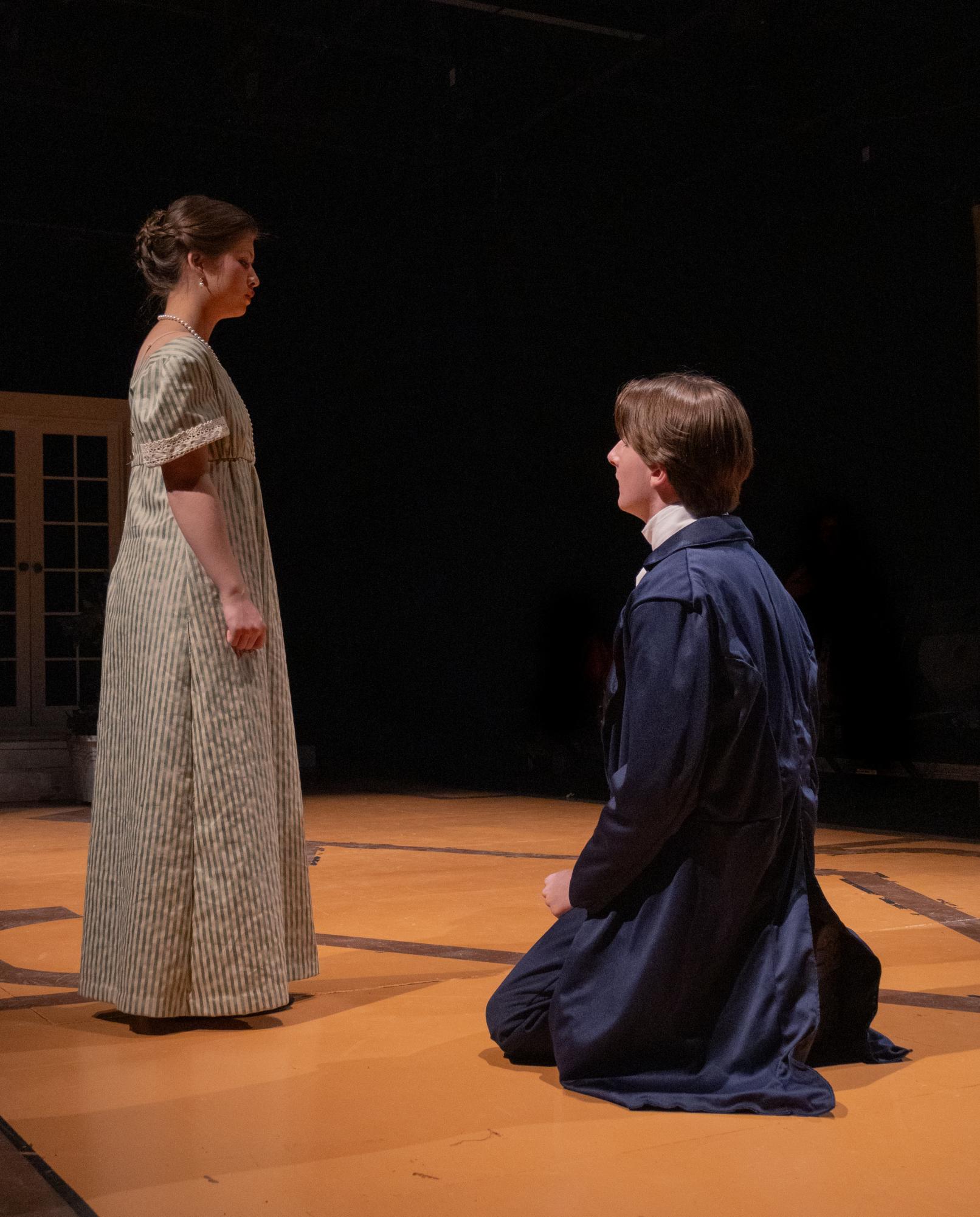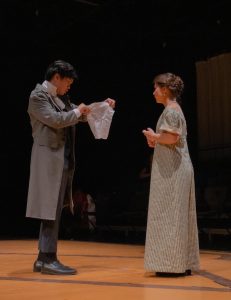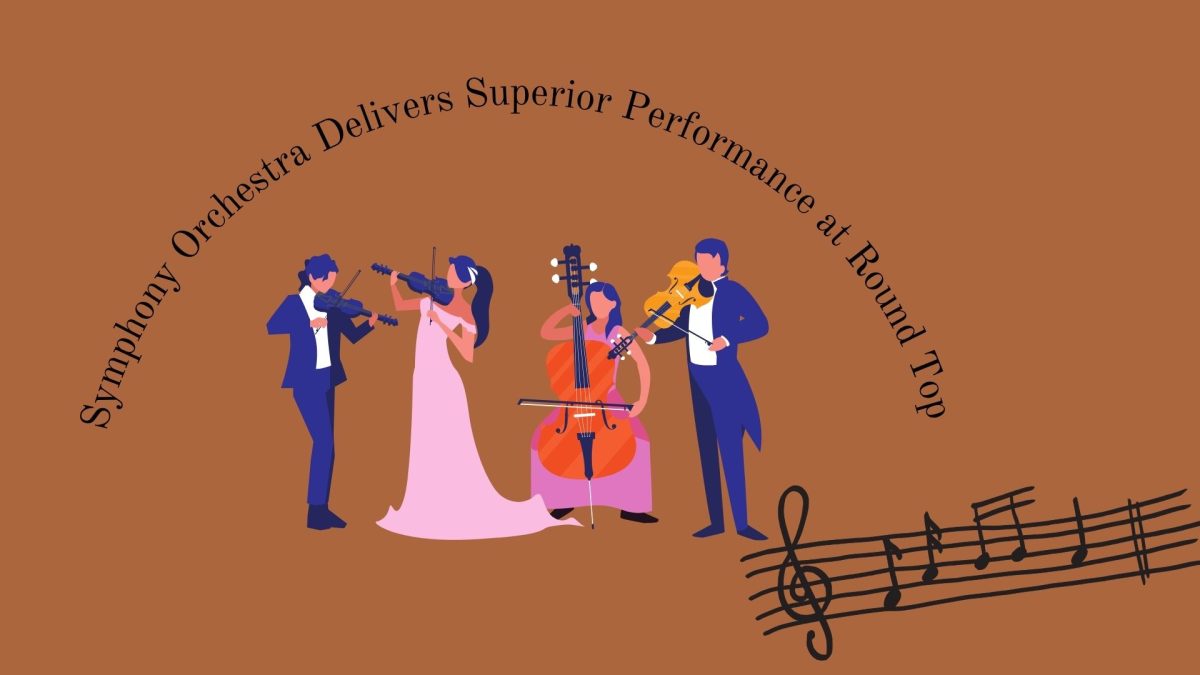A casual observer might have thought someone was throwing an extravagant ball in the Big Black Box. The room was transformed – with cameo portraits on opposite walls, an ornate chandelier hung from the center of the ceiling, and an elaborate, swirling floral pattern across the floor – and in it, a 19th century story was reanimated. For a three-day run starting Thursday, Oct. 10, Westwood Theater performed their fall show, Sense and Sensibility, showcasing months of work from a whole host of students – from actors to technicians to the production team.
The Jane Austen novel, adapted by Kate Hamill for the stage, is one of the most famous works of Regency-era literature. This time period, spanning from the late 18th century to the mid-19th century, is known for its art, culture, and above all, an extensive social etiquette. The production team for the show – student assistant directors Cheyenne Wang ‘25, Mason Jacob ‘25, Katie Ring ‘25 – was responsible for fostering that same atmosphere of class and politeness within the play.
“We made sure to do our proper research,” Wang said, “and we looked at a lot of things such as posture and certain etiquette that people from that time would use. I think truly, having every single person do the [English] accent made the atmosphere and the environment so much more unified.”
Additionally, a focal point of both the Regency era and the narrative of Sense and Sensibility is ballroom culture and dancing. The production was staged with audience members seated on two sides facing each other, to give the attendees the sense that they were also a part of the ballroom, watching the drama unfold. And, as the center of society and culture, some of the play’s most crucial moments were bookended by literal dance scenes. Juniors Saffron Kollodge and Lucy Allison – both of whom also participate in Westwood Dance programs – were tasked with choreographing a number of dance sequences in the show.
“We did a lot of research to make the dances as period-accurate as possible,” Kollodge said. “But since we were working with a lot of actors who don’t have a lot of experience with dance, we also had to think about keepings things simple and still looking good. So we used a lot of patterns and repetition and changing positions, and not too many complicated dance moves.”
Kollodge was also a member of the costume team, who took on the responsibility of creating the distinctive silhouettes and styles of the Regency era. The process of costuming the show began in August, and took weeks of research, pulling items from the department’s costume closet, tailoring and compiling ensembles, and in some cases, even creating pieces from scratch.
“We started again with a lot of research,” Kollodge said. “We especially looked at the portraiture of the time to get an idea of how different people would dress. We ended up having to rent overcoats for some of the guys, and we had to totally make four dresses.”
But oftentimes, the time period – and its strict demands on physicality, voice, and behavior – was an asset. For Natalie Berkaw ‘25, who performed as Elinor Dashwood (one of the two central sisters, and the titular “Sense”), the rigid social boundaries helped her access creativity in characterization and mannerisms, leading to a total immersion of the performers and audience.
“The specificities of the era gave us restrictions which I feel like gave me more room to push myself and be more creative,” Berkaw said. “Understanding the etiquette of the Regency era helped me to get into the mind of my character a lot better. It gave us different dynamics and energy levels to work with and I think we all had a lot of fun learning about the era.”
Westwood Theater takes the stage next for their children’s show, Alice in Wonderland, performing at the Raymond E. Hartfield Performing Arts Center on Friday, Nov. 15.






























